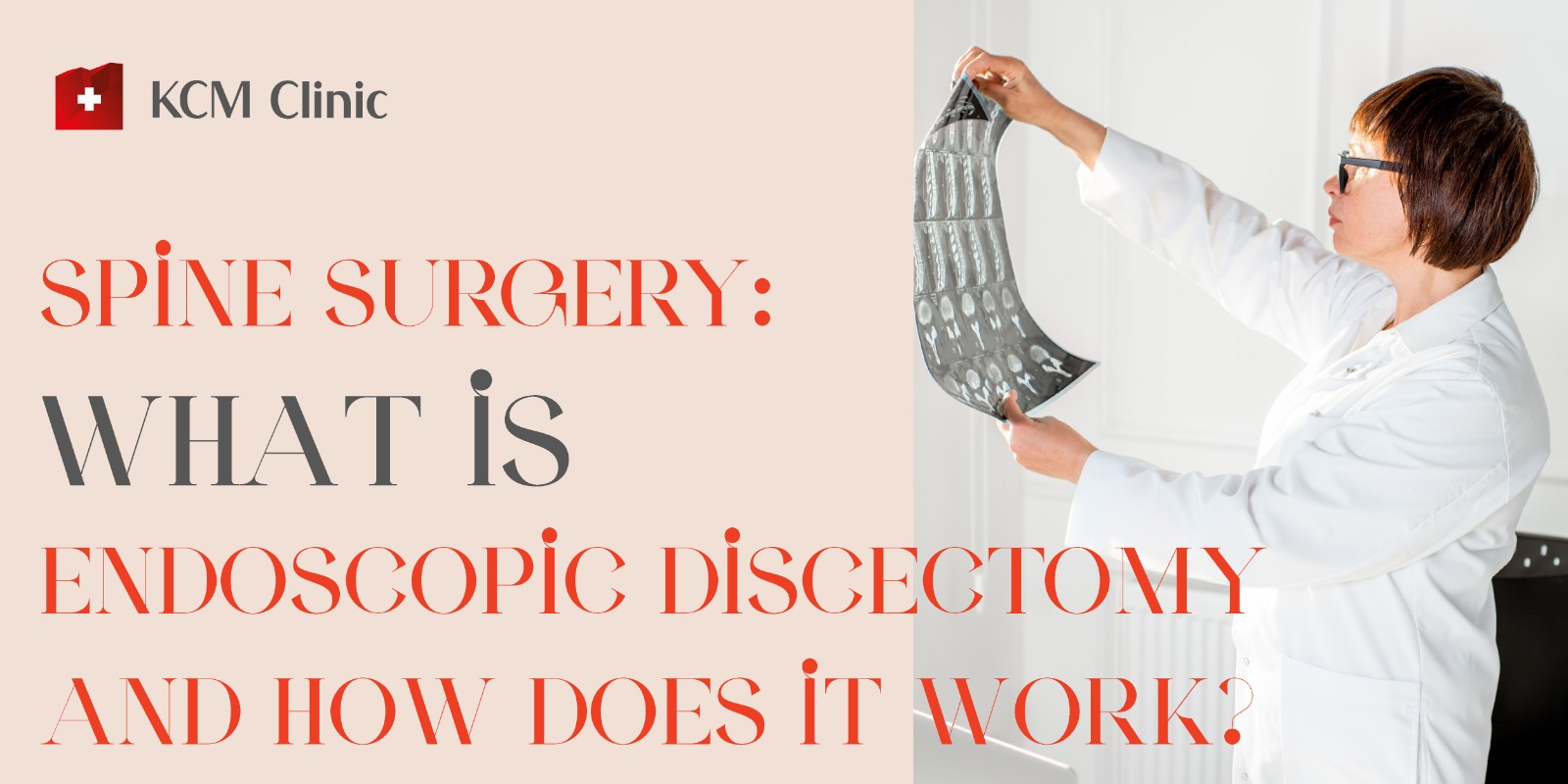Endoscopic discectomy is a minimally invasive surgical procedure that aims to remove herniated disc material that is pressing on a nerve or the spinal cord.
When physiotherapy or other non-surgical procedures haven’t helped treat pain or mobility issues caused by hernias, spine surgery might be the only viable treatment option.
Depending on the location of the hernia and where pain is located, endoscopic discectomy can be lumbar, thoracic, or cervical.
We are going to delve into this procedure, the different types of surgery, recovery time and how the procedure works step by step.
Who is endoscopic discectomy for?
Herniated discs can be extremely painful, often causing great discomfort and affecting your personal and professional life.
There are different non-surgical treatments available before having surgery, including physiotherapy, stretching, exercise, or corticosteroids. However, when conservative treatments do not work, surgery might be the only option.
Individuals who have herniated or bulging discs often suffer from pain, weakness or numbness. Surgery can give immediate relief. Endoscopic discectomy might also help patients who need to minimise pain and discomfort caused by discs that are torn or who have chronic radiculitis (shooting pain down the leg).
How is endoscopic discectomy performed?
Before surgery, you will have a consultation with the neurosurgeon performing the procedure at KCM Clinic – Dr Arkadiusz Granek. You will also need to show a recent MRI or CT scan to qualify for the procedure (results cannot be older than 6 months). Make sure you have all your test results with you, including the CD. The test description alone is not sufficient.
Endoscopic discectomy is performed under general or local anaesthesia. Either way, the treated area will be completely numb and you will not feel any pain.
The surgeon will then make a small incision near the herniated disc and insert a dilator to keep the incision open. An endoscope with a HD camera is then inserted so that the surgeon can have a clear overview of what needs to be removed. The surgeon will then insert special instruments through the endoscope to remove the herniated disc. The hernia material pressing on the nerve structures is precisely removed from the inside of the hernia. Such surgical access reduces the risk of damage to the spinal cord.
When surgery is complete, the surgeon will remove the endoscope and close the incision. An endoscopic discectomy takes between 30 minutes – 1 hour to perform and you are free to go home a few hours after you wake up from the anaesthetic.
Lumbar endoscopic discectomy
If pain is located in the lower back and extends to your legs, the hernia might be located in the lower part of your spine. In this case, a lumbar endoscopic discectomy is performed. A small incision will be made on the side of your back to access the area that needs to be treated.
This procedure is often performed to treat patients who have progressively worsening numbness or weakness in their legs or have serious mobility issues as a result.
Thoracic endoscopic discectomy
Thoracic endoscopic discectomy is done when the herniated disc that causes pain is located in the mid back.
Cervical endoscopic discectomy
Cervical endoscopic discectomy helps patients whose pain starts in the cervical spine and radiates down to the arms, forearms and hands. Individuals who suffer from neurological deficits, including hand paresis, sensory disturbances, paresthesia and other clinical symptoms, may notice that their symptoms either disappear completely or improve significantly after this procedure.
Is endoscopic discectomy painful?
Patients who undergo an endoscopic discectomy generally feel immediate relief after surgery. You will not feel any pain during the procedure, as the doctor will administer a local anaesthetic to numb the area. Still, you might experience some discomfort in the surgical area once the anaesthetic wears off. You will receive prescriptions for oral analgesics or anti-inflammatory medications to help.
You may also feel numbness and weakness but this will typically subside in the next couple days.
What is the recovery time of endoscopic discectomy?
Compared to the more invasive surgeries of the past, endoscopic discectomy is an innovative procedure that is minimally invasive, allowing for quicker recovery.
After the procedure is done, you will be able to slowly move around. For the next six weeks, you will need to limit lifting, twisting, or bending. You can shower two days after surgery but avoid baths: be careful not to completely submerge the incision area in water.
Patients can generally return home the day of the procedure. You may receive painkillers to treat initial pain and discomfort from the surgery.
Most patients can return to work about 2 to 4 weeks after the procedure. If your job is physically demanding, however, you may have to wait longer to return to work. Make sure you discuss with your doctor what the best course of action is.
Herniation surgery at KCM Clinic
Endoscopic discectomy has several benefits, including a short recovery time, small incisions and minimal scarring, minimal blood loss and retained spinal mobility.
At KCM Clinic, we use the latest and most advanced technology in the field to ensure the best possible outcomes.
Our specialists will be happy to assist you whether you need a lumbar, thoracic, or cervical endoscopic discectomy. To start, send us an inquiry with your request. One of our patient coordinators will be in touch with you to discuss your options.
Send Request
Register
Visits, hospital procedures
Bariatric Surgery Center
Plastic Surgery Center
Spine Surgery Center
Dental Clinic
OMEGA Imaging Diagnostic Center
Work hours
KCM Clinic Wrocław
Chat KCM Clinic
Locations
KCM Clinic Jelenia Góra
KCM Clinic Wrocław
Parking








